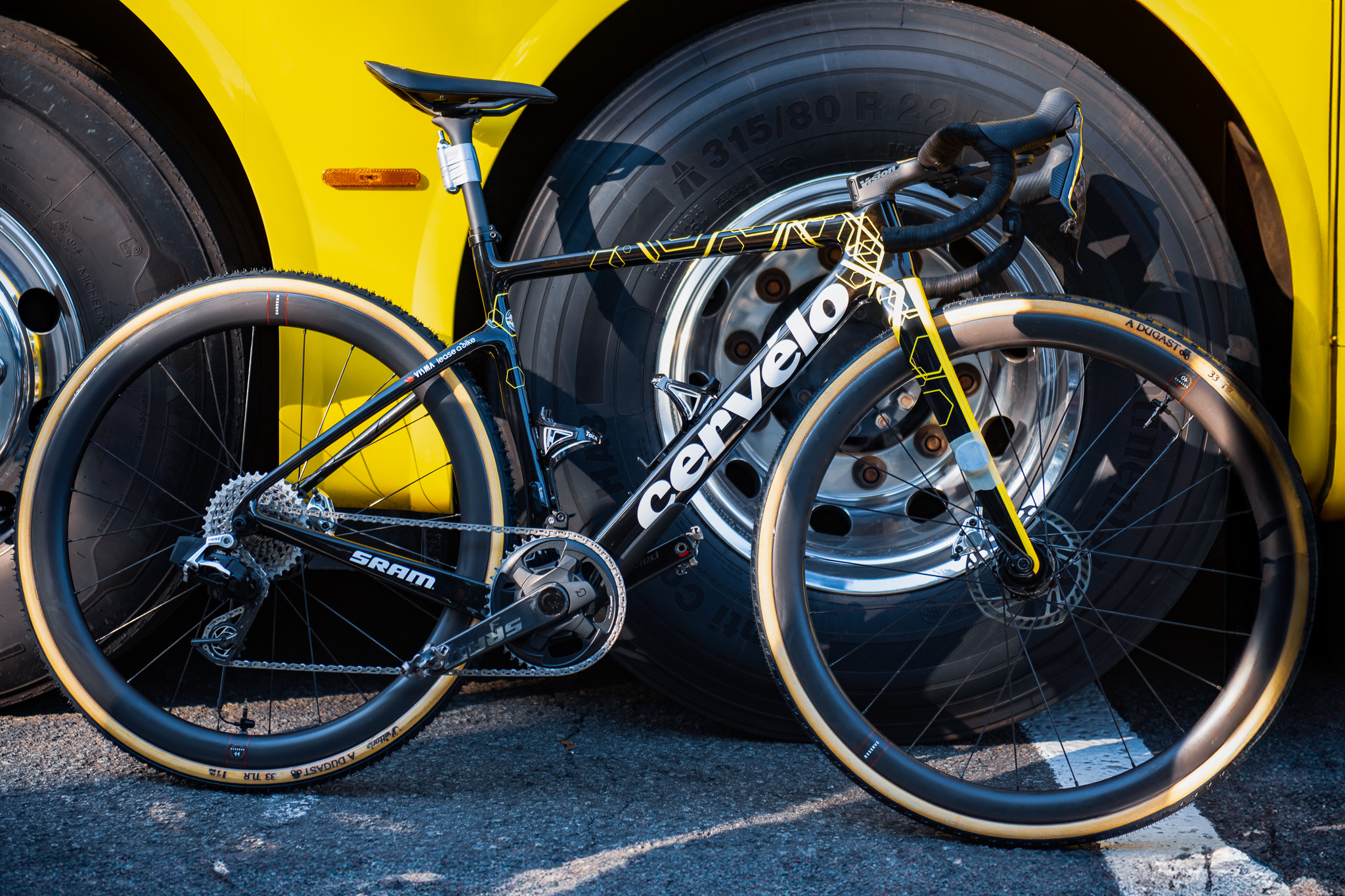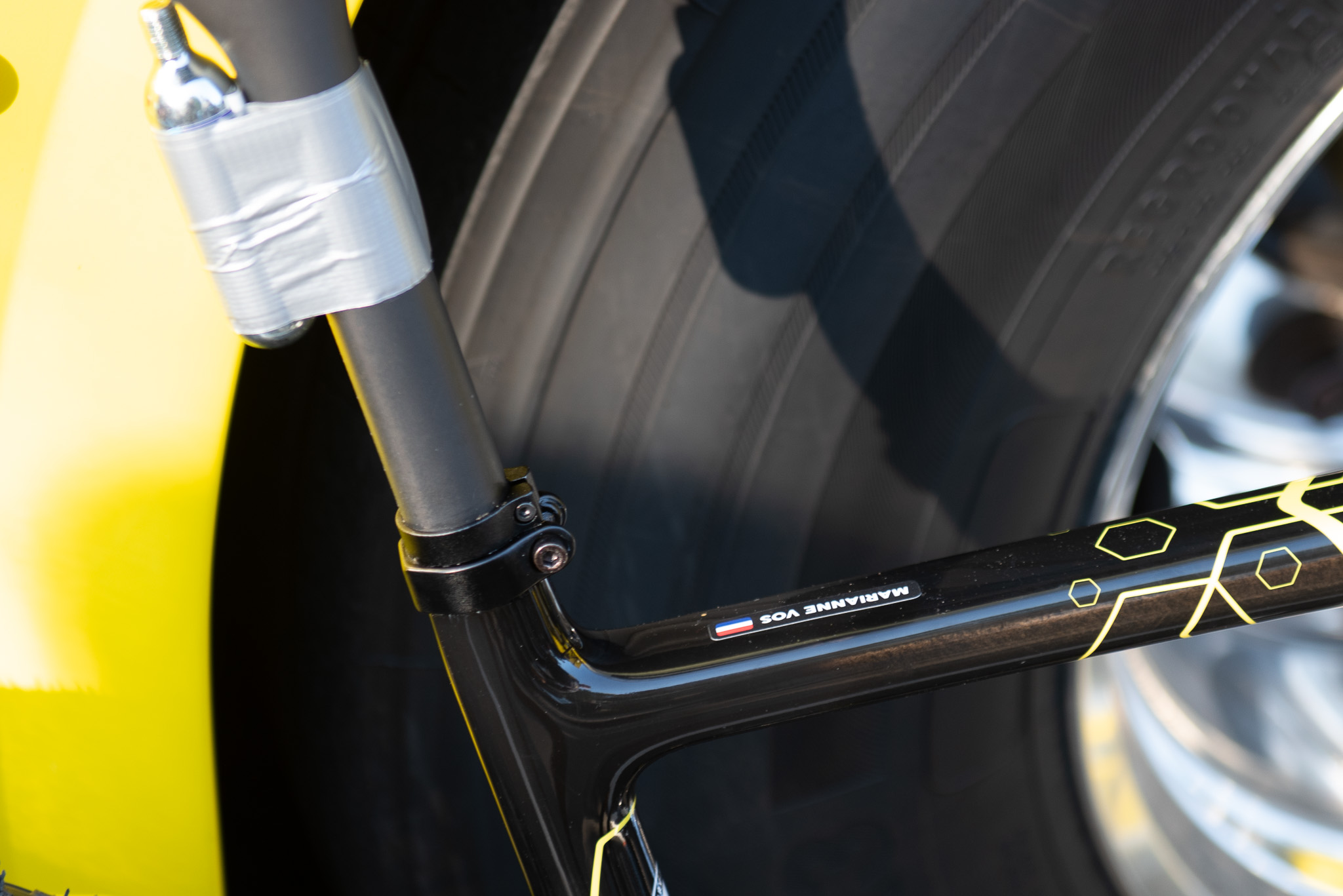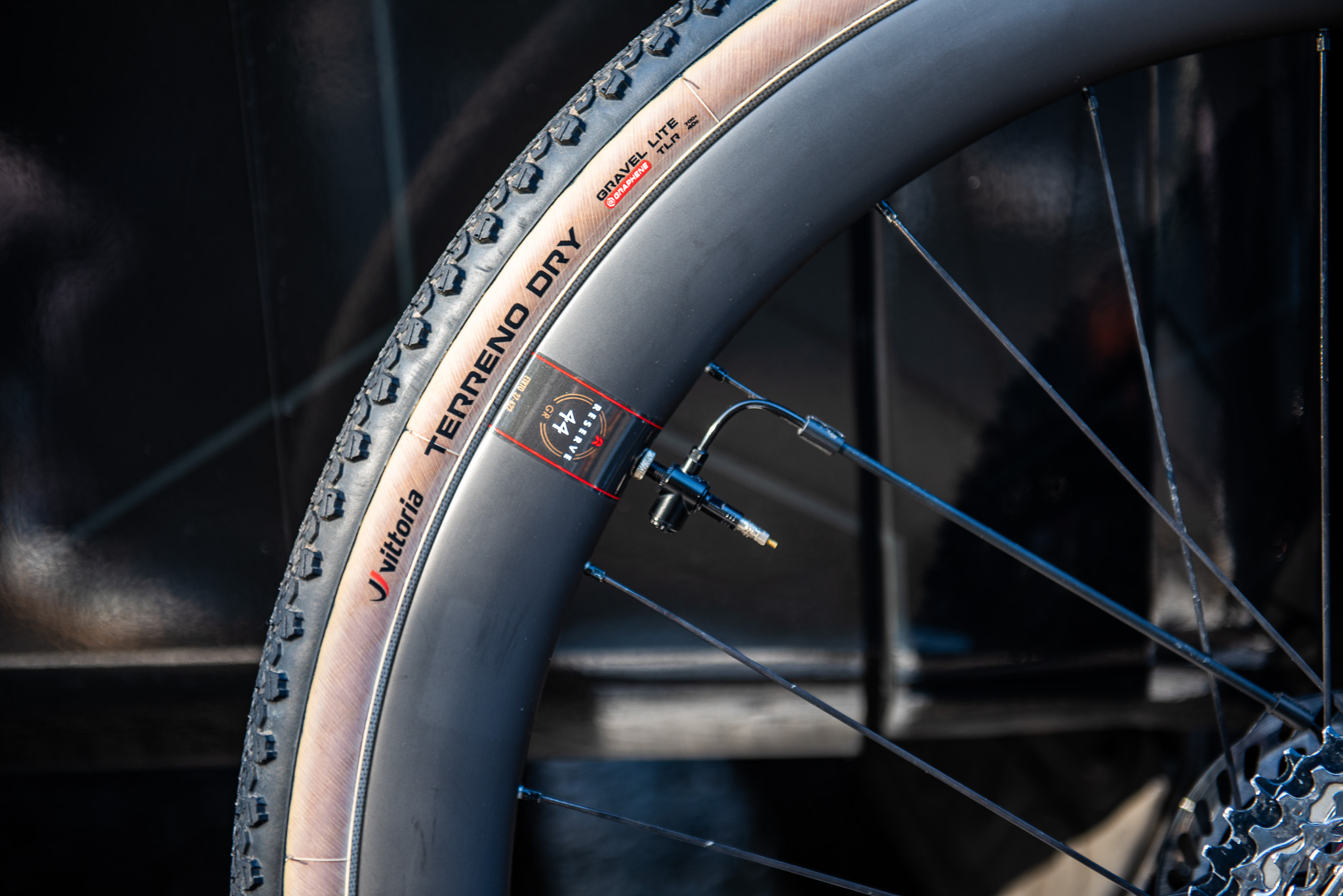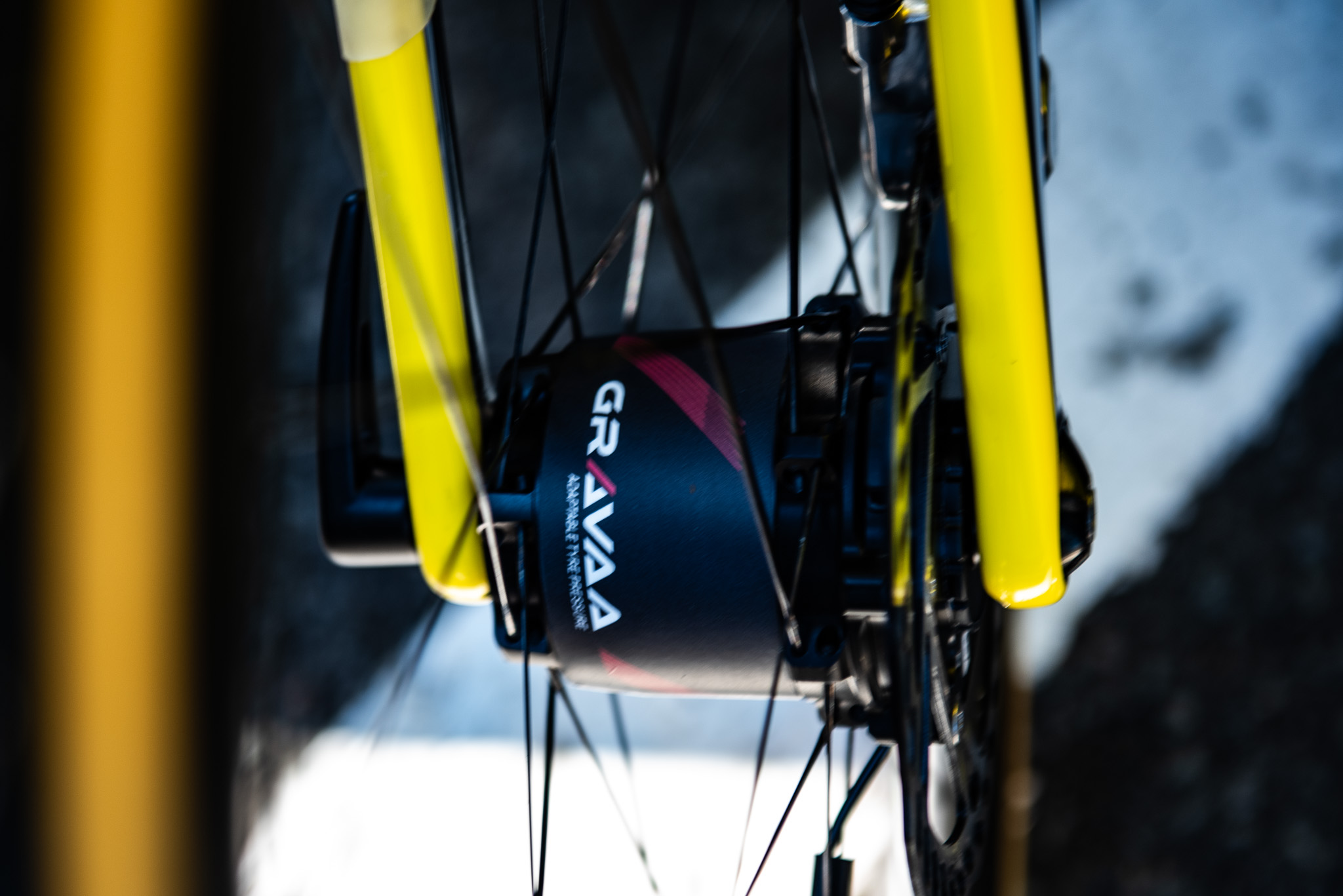Tyres which can inflate themselves have often seemed like a sci-fi conception of a would-be gain in WorldTour riding, but the technology has moved one step closer to breaking into the WorldTour peloton at the 2024 Gravel World Championships.
Marianne Vos (Netherlands) showcased Gravaa’s self-inflating tyre technology ahead of the Gravel World Championships following an absence of the system in professional racing since the 2023 edition of Paris-Roubaix.
The Gravaa system uses tiny compressors which live within the wheel hubs to inflate the pressure of the tyre while on solid terrain, before reducing pressure to accommodate rougher terrain where lower pressure could optimise rolling resistance.
Gertjan van Ginderen, owner of Gravaa, explained that the system has been developed considerably since its initial release in 2022. “So we improved the electronics a lot, I must say,” he told Cyclingnews. “So there’s a PCB [printed circuit board] inside each hub, and this is very vulnerable for moisture dirt, so we’ve actually made a change inside the technology to have it completely potted.
“So it’s completely potted the electronics in the epoxy. We’ve changed the antenna, we’ve changed the disc brakes, including the interface of the disc brakes, also to be compatible with other spoke configurations.”
Image 1 of 3



The system uses a kinetic pump, driven by the rotation of the wheel which means it doesn’t need to be charged and doesn’t use an internal CO2 canister as seen on some of the previously tested self-inflation systems. That means the tyre can be deflated and inflated as many times as a rider needs.
“This basically is a very small compressor clutch mechanism and electronic printed circuit board, and the hubs talk with each other,” Van Ginderen explained. So the front hub is the master, while the rear up is a slave. And to the front up, you can connect either your smartphone or your bicycle computer, as long as it and plus or Bluetooth compatible.”
The latest race content, interviews, features, reviews and expert buying guides, direct to your inbox!
The technology stunned the world of cycling tech obsessives when it first made its appearance in 2022 – when Team DSM used the Scope Atmoz system – with the potential improvements of rolling resistance offering a considerable advantage against competition in mixed terrains.
While initially intriguing, none of the riders using the Gravaa system for Visma in 2023 saw success at that year’s edition and the hubs were not used the following year.
However, with the technical updates, and Gravaa’s broader business development, Van Ginderen is confident the technology will now become a more permanent fixture of Visma-Lease a Bike’s bike setup at the Classics.

Marianne Vos explained that she had been training on the bike ahead of the race. “I’ve been on the Cervelo gravel bike already two years ago, but now this setup on the new bike I only had since last week. We have done some recons on this bike, at least the bike is ready,” she said with a laugh.
Vos enters the women’s elite race as a favourite, meaning her use of the technology is a big vote of confidence in the innovation.
“I have to do a good race, stay out of trouble. It’s difficult to predict how things will unfold, how I will be. I feel good. We want to try and be with some Dutchies in the final,” she said.
Dutch teammate Femke de Vries is also using the system in the women’s race, while Belgian rider Tiesj Benoot will use it in tomorrow’s men’s elite race.
Related – Read Cyclingnews’ in-depth lab test of the best road bike tyres
Get unlimited access to all of our coverage of the 2024 UCI Gravel World Championships – including breaking news and analysis reported by our journalists on the ground from the elite women’s and elite men’s events as it happens and more. Find out more.








